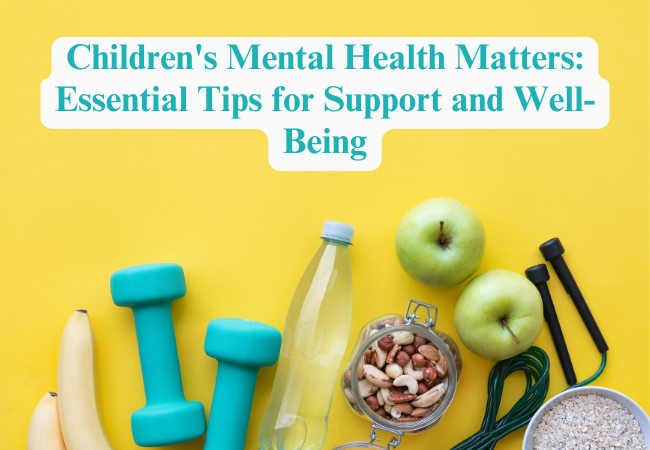Children’s Sleep Routines: Tips for Better Sleep and Healthy Rest
Discover effective children’s sleep routines to ensure better sleep and healthy rest. Learn tips for establishing a consistent bedtime, creating a calming environment and addressing common sleep challenges.
Good children’s sleep is crucial for a child’s growth, development and overall well-being. Establishing healthy sleep routines can help ensure that your child gets the rest they need to thrive. In this guide, we’ll explore effective strategies for creating bedtime routines, addressing common sleep challenges and promoting healthy sleep habits for children of all ages.
The Importance of Sleep for Children

Before we dive into sleep routines, let’s understand why sleep is so vital for children:
- Physical growth and development
- Cognitive function and learning
- Emotional regulation
- Immune system support
- Behavioral improvement
Recommended Sleep Duration by Age
Different age groups have different sleep needs. Here’s a general guide:
- Newborns (0-3 months): 14-17 hours
- Infants (4-11 months): 12-15 hours
- Toddlers (1-2 years): 11-14 hours
- Preschoolers (3-5 years): 10-13 hours
- School-age children (6-13 years): 9-11 hours
- Teenagers (14-17 years): 8-10 hours
Creating an Effective Bedtime Routine
A consistent bedtime routine can signal to your child’s body that it’s time to wind down and prepare for sleep.
Here are some tips for creating an effective routine:
- Set a consistent bedtime: Choose a bedtime that allows for adequate sleep and stick to it, even on weekends.
- Start the routine 30-60 minutes before bedtime: This gives your child time to transition from active play to sleep.
- Include calming activities: Reading stories, gentle stretching, or quiet talks can help your child relax.
- Avoid screens: The blue light from devices can interfere with sleep. Turn off screens at least an hour before bedtime.
- Create a sleep-friendly environment: Ensure the bedroom is dark, quiet, and at a comfortable temperature.
- Use a visual schedule: For younger children, a picture chart of the bedtime routine can help them understand and follow the steps.
Age-Specific Sleep Routine Tips
For Babies (0-12 months):
- Establish a bedtime routine early, even as young as 6-8 weeks
- Include feeding, gentle rocking, and soft lullabies
- Put your baby down drowsy but awake to encourage self-soothing
For Toddlers (1-3 years):
- Offer choices within the routine (e.g., which pajamas to wear)
- Use a comfort object like a stuffed animal or blanket
- Be consistent with returning your child to bed if they get up
For Preschoolers (3-5 years):
- Allow for some quiet play time before starting the bedtime routine
- Address fears or anxieties that may arise at bedtime
- Use positive reinforcement for staying in bed
For School-Age Children (6-13 years):
- Encourage relaxation techniques like deep breathing or visualization
- Limit caffeine intake, especially in the afternoon and evening
- Ensure homework is completed well before bedtime to reduce stress
For Teenagers (14-17 years):
- Discuss the importance of sleep for academic and athletic performance
- Encourage a consistent sleep schedule, even on weekends
- Create a “wind-down” hour before bed for relaxation
Addressing Common Sleep Challenges
Even with a good routine, sleep challenges can arise. Here are some common issues and how to address them:
- Bedtime resistance: Stay calm and consistent. Return your child to bed without engaging in conversation or play.
- Night wakings: Keep interactions brief and boring. Avoid turning on lights or engaging in stimulating activities.
- Nightmares or night terrors: Comfort your child, but avoid elaborate efforts to “banish” the bad dreams, which can reinforce fears.
- Early rising: Use room-darkening shades and a white noise machine to create a sleep-friendly environment until wake-up time.
- Sleep anxiety: Address fears calmly and provide reassurance. Consider using a nightlight or “monster spray” (water in a spray bottle) for younger children.
Creating a Sleep-Friendly Environment
The sleep environment plays a crucial role in promoting good sleep. Consider these factors:
- Darkness: Use blackout curtains or shades to create a dark sleeping environment.
- Noise control: Use a white noise machine or fan to mask disruptive sounds.
- Temperature: Keep the room cool, typically between 60-67°F (15-19°C).
- Comfort: Ensure your child has a comfortable mattress, pillows, and bedding.
- Clutter-free: Keep the bedroom tidy and free from distractions.
The Role of Diet and Exercise in Sleep
What happens during the day can affect sleep at night. Consider these tips:
- Limit caffeine: Avoid caffeinated beverages, especially in the afternoon and evening.
- Encourage physical activity: Regular exercise can improve sleep quality, but avoid vigorous activity close to bedtime.
- Time meals appropriately: Avoid large meals close to bedtime, but a light snack can be helpful if your child is truly hungry.
- Stay hydrated: Ensure your child drinks enough water during the day, but limit fluids close to bedtime to prevent night wakings.
When to Seek Professional Help
If sleep problems persist despite consistent routines and a sleep-friendly environment, it may be time to consult a pediatrician or sleep specialist. Consider seeking help if:
- Your child snores loudly or seems to have difficulty breathing during sleep
- Sleep problems are affecting daytime behavior or school performance
- Your child experiences excessive daytime sleepiness
- Bedtime battles are causing significant family stress
Conclusion
Establishing healthy sleep routines takes time and patience, but the benefits are well worth the effort. By creating consistent bedtime routines, addressing sleep challenges, and promoting a sleep-friendly environment, you can help ensure your child gets the restful sleep they need to grow, learn, and thrive.
Remember, every child is unique, and what works for one may not work for another. Be patient, stay consistent, and don’t hesitate to adjust your approach as your child grows and their needs change. With time and effort, you can help your child develop healthy sleep habits that will serve them well throughout their life.
Learn more about the science of children’s sleep
Discover age-appropriate bedtime routines
Sweet dreams to you and your little ones!
For more information and guide, visit usaparentingtips.com






